Housing Master Plan Is Building Community, One Neighborhood at a Time
By Bruce Gerson
Several new “neighborhoods” will be popping up on campus in the next few years as part of Carnegie Mellon University’s 15-year, $400 million housing master plan.
New residence halls, major renovations and upgrades to existing facilities are the brick and mortar projects in the plan, but a new “neighborhood commons” idea from Vice President for Student Affairs and Dean of Students Gina Casalegno aims to build community in an exciting way for the entire campus community.
Upcoming housing projects — one at Fifth Avenue and Clyde Street, a second at Morewood E Tower and a third at the Hill neighborhood on Margaret Morrison Street — will include large, inviting spaces to bring students together to engage, have fun, study and collaborate. Each “neighborhood commons” will be about 5,000 square feet and will support a range of individual and group activities. A fourth neighborhood commons is on the horizon as part of a new Donner Hall.
“We know the power of a built environment in cultivating a sense of community,” said Casalegno, a former CMU housefellow. “Gathering places like the Cohon University Center ‘black chairs’ in Kirr Commons, the Gates Café in Gates-Hillman, and the Rohr Commons in the Tepper School building bring people together across disciplines.
“We hear from students they crave more spaces to convene with one another, to collaborate, to study and to explore common interests. Building hubs of engagement in each neighborhood is a great way to catalyze a sense of belonging for all students,” she said.
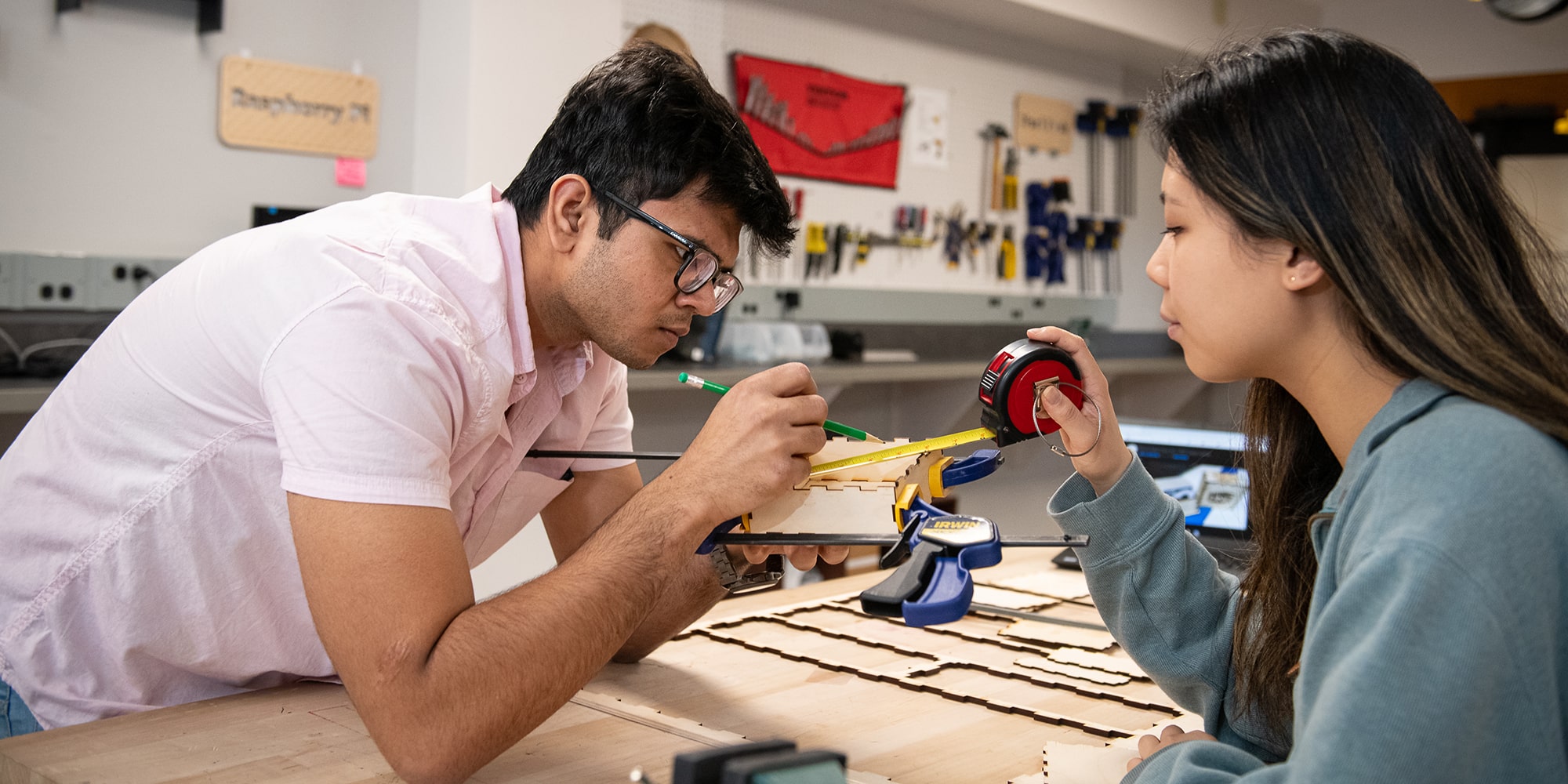 Students work at the Morewood Gardens Maker Space.
Students work at the Morewood Gardens Maker Space.
Casalegno and Tom Cooley, executive director of Housing Services, pointed to the Morewood Maker Space as a good example of the concept. The 1,200 square-foot facility on the first floor of Morewood Gardens has two rooms with many items such as a laser cutter, sewing machines and sound equipment.
“We built it for the students in Morewood Gardens and E Tower and we’ve found everybody in the Morewood corner wants to come and use it,” Cooley said. “Those rooms are packed during finals week.”
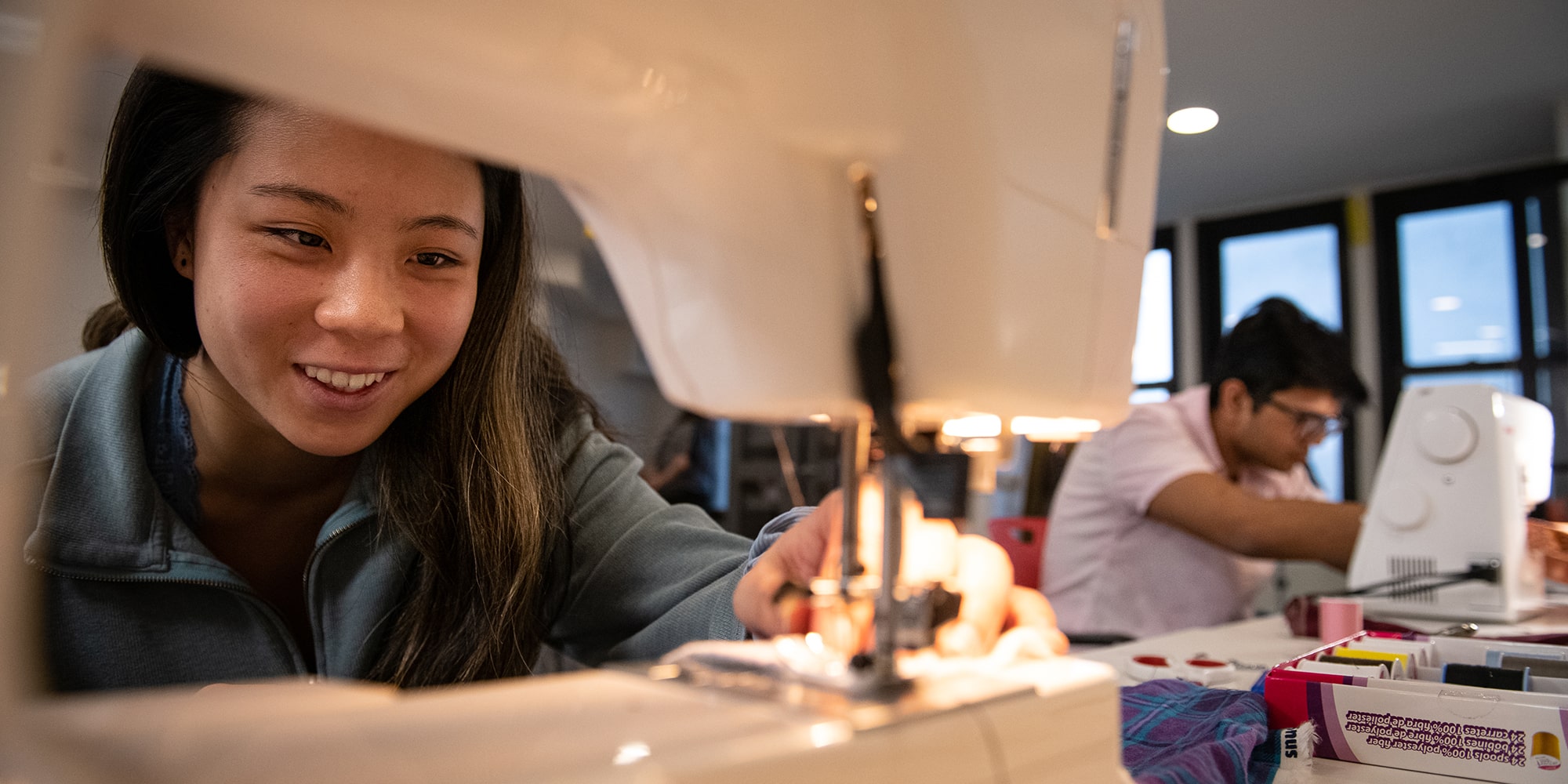 The Morewood Maker Space has sewing machines, a laser cutter and sound equipment.
The Morewood Maker Space has sewing machines, a laser cutter and sound equipment.
A hearth, surrounded by comfortable furniture and plenty of natural light stemming from floor-to-ceiling windows, will be at the centerpiece of each new commons area.
“I’ve always wanted a gas fireplace in the residence halls because of what it means,” Cooley said. “It gives you a sense of home, it brings people together.”
Cooley credits fifth-year scholar Cory Bird for his input in the design of the neighborhood commons. Bird, who earned his bachelor’s degree in computational neuroscience with a minor in sustainability studies, is using his fifth-year of study to explore how physical space can shape the student experience. He was a big advocate for using natural light to connect the inside with the outside community.
“The neighborhood commons concept is super exciting for me,” said Bird, a community advisor for students living along the Fifth Avenue corridor. “It will serve to bring students in that specific neighborhood together, but it goes further than that. It will encourage students on campus who don’t live there to go there as well, so it becomes a larger gathering space for students on campus. It will add an entirely new dimension to the CMU residential experience.”
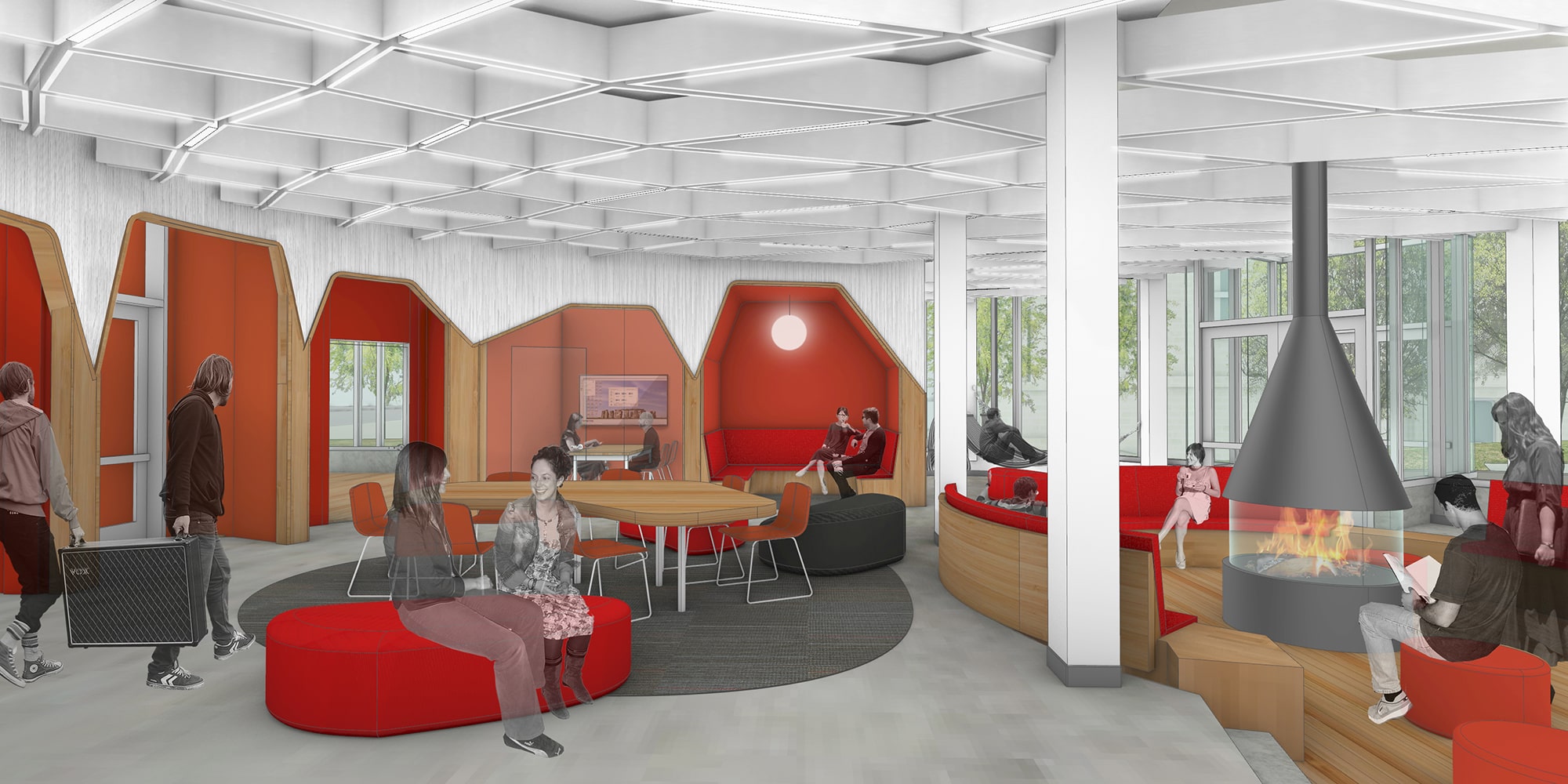 A hearth, surrounded by comfy furniture and plenty of natural light stemming from floor-to-ceiling windows, will be at the centerpiece of each new commons area. Courtesy of LTL Architects.
A hearth, surrounded by comfy furniture and plenty of natural light stemming from floor-to-ceiling windows, will be at the centerpiece of each new commons area. Courtesy of LTL Architects.
Welcome to the Neighborhood
CMU’s first neighborhood commons will be in the Fifth-Clyde residence, a six-story, 265-bed, semi-suite-style facility for sophomores, juniors and seniors. The project is recently underway and is slated for occupancy in fall 2021. Each floor will have three study spaces and a lounge. The Fifth-Clyde neighborhood commons will have a wellness room, a dance room with spring-loaded flooring for better bounce, a multi-purpose room, music rehearsal rooms, and, of course, a hearth.
Cooley compares the commons area to a “mini-university center,” where students can come together for activities and build a sense of belonging.
“A student who lives in the Fifth Avenue corridor and wants to play his or her instrument at 9 p.m. won’t have to go to CFA or the Cohon University Center. They can just stroll over to Fifth-Clyde,” Cooley said.
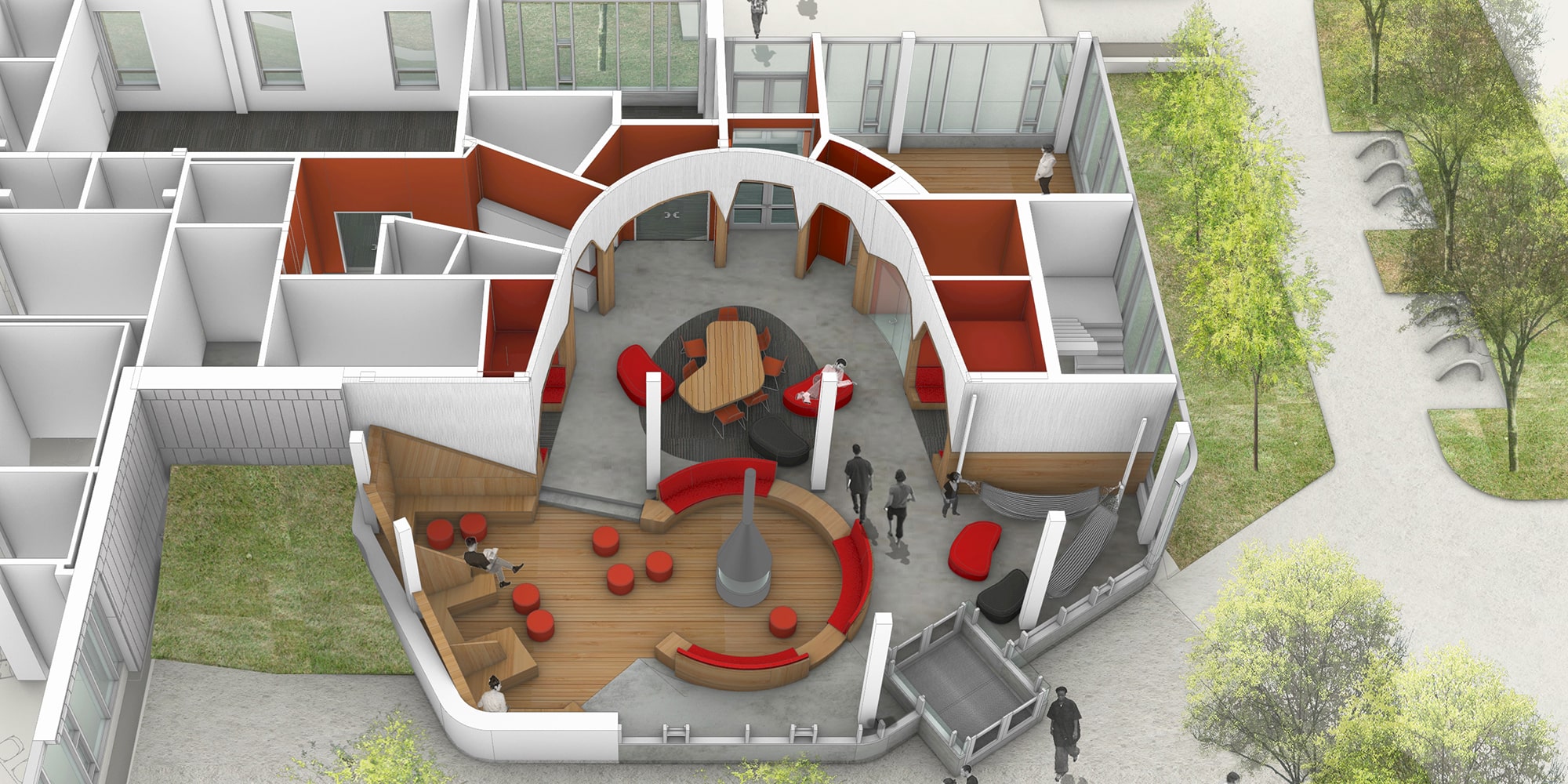 Director of Housing Services Tom Cooley comparies the commons area to a "mini-univrsity center." Courtesy of LTL Architects.
Director of Housing Services Tom Cooley comparies the commons area to a "mini-univrsity center." Courtesy of LTL Architects.
Six guiding principles for the design of the commons have been developed in partnership with LTL Architects, a New York-based firm. Each commons must provide a network of community engagement spaces; support a range of individual programs; create a place where all students, faculty and staff can form a community; have flexible spaces and uses; encourage play and rejuvenation; and be adaptable to local sites and programs.
The second neighborhood commons will be part of an addition onto Hamerschlag House above Margaret Morrison Street. This addition is expected to be completed by fall 2023.
The third commons will be part of a renovation to Morewood E Tower, where University Health Services is located. UHS will be moving to the new student health, wellness and athletics center at the corner of Tech and Margaret Morrison streets. The Morewood E Tower project is expected to be finished by fall 2025.
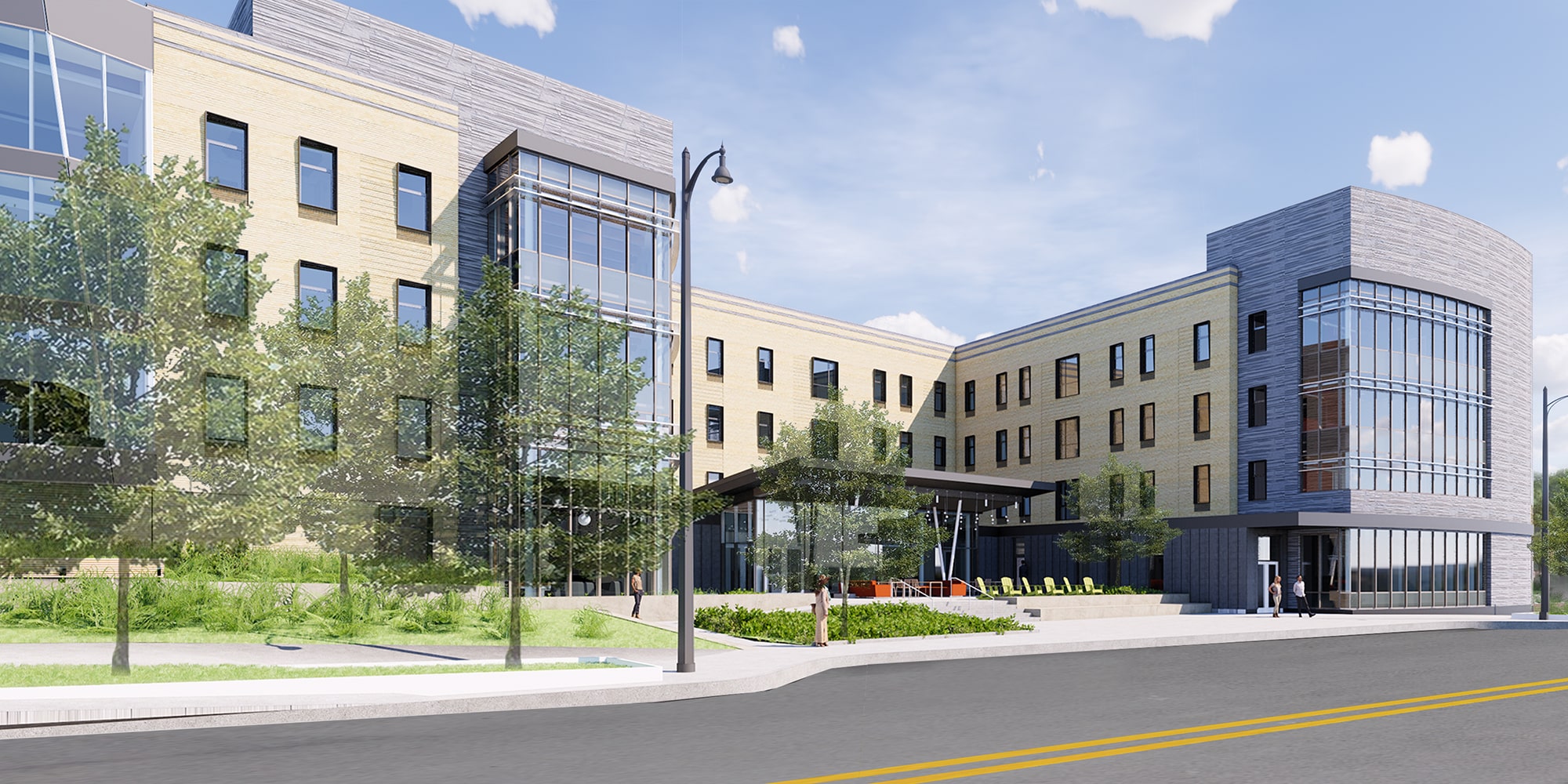 Forbes-Beeler House will be a four-story, 266-bed apartment-style facility with a food market on the first floor. Rendering courtesy of Goody Clancy Architects.
Forbes-Beeler House will be a four-story, 266-bed apartment-style facility with a food market on the first floor. Rendering courtesy of Goody Clancy Architects.
One upcoming new construction project will not include a neighborhood commons, but it will include a food market. The Doherty Hall Apartments will be torn down this spring to make room for Forbes-Beeler House, a four-story, 266-bed apartment-style facility with five community spaces on each level and a food market on the first floor. The hillside will be removed, allowing Forbes-Beeler to have a street-level presence. It is expected to be completed by fall 2022.
“We are making sure we are providing opportunities for students to succeed,” Cooley said. “Many students are gone during the day and when they come home they need space to do their work and relax. These buildings will support the students of the future. They’ll be beautiful, sustainable and foster community. That’s what we’re looking for.”
